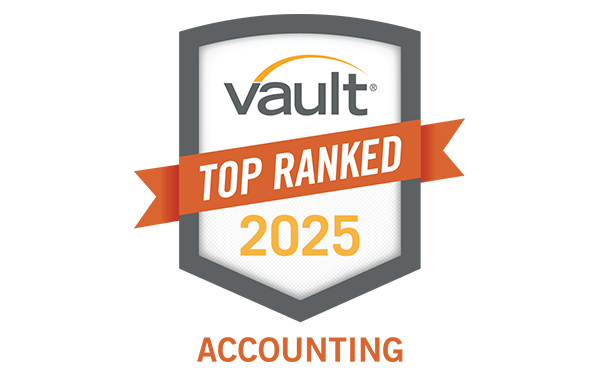Accounting Standards Update (ASU) 2016-13: Financial Instruments – Credit Losses (Topic 326) implementation starts with fiscal years ending December 31, 2023, but the adoption date was January 1, 2023. ASU 2016-13 is also known as Current Expected Credit Losses (CECL).
Financial Assets included in ASC 326:
Of financial assets impacted by ASC 326, nonprofit organizations typically hold the following:
- Notes receivable (excludes related party notes);
- Accounts receivable for exchange transactions, such as membership dues or tuition under ASC Topic 606;
- Off-balance-sheet credit exposure, such as guarantees, commitments, or letters of credit;
- Capital or financial leases held by the lessor; and
- Any other financial asset not excluded from the scope that the entity has the contractual right to receive cash.
Financial Assets excluded from ASC 326:
- Financial assets reported at fair value with changes flowing through net income or change in net assets, such as investments;
- Participant loans made through a defined contribution plan;
- Promises to give covered under ASC Topic 985;
- Intercompany notes or receivables;
- Notes or receivables between entities under common control;
- Derivatives and hedging instruments covered under ASC Topic 815; and
- Operating leases held by the lessor.
CECL MEASUREMENT MODEL
The CECL model requires entities to measure all expected credit losses for financial instruments they hold on the reporting date based on historical experience, current conditions, and reasonable and supportable forecasts.
Reporting entities should record the expected lifetime credit losses for financial instruments within the scope of CECL through the allowance for credit losses account. As a result, the financial statements will generally reflect the net amount expected to be collected on recognized assets. The allowance is measured and recorded upon the initial recognition of the in-scope financial instrument, regardless of whether it is originated, purchased, or acquired in a business combination.
Prior to the adoption of CECL, credit loss expense (or what was commonly referred to as “bad debt expense”) was recognized only when it was probable that a credit loss had been incurred. Under the CECL model, an allowance is recorded at the point of initial recognition of the asset for all expected losses over the life of the asset.
The CECL model requires that an entity’s estimate of expected credit losses includes a measure of the expected risk of credit loss even if that risk is remote.
In addition, under CECL, credit impairment is recognized as an allowance for credit losses, not as a direct write-down method of the financial asset. The ASU doesn’t establish a threshold for recognizing an impairment allowance, though, so entities also must measure expected losses on assets with a low risk of loss. That means trade receivables that are current or not yet due will have an allowance. Under the current rule, such a receivable might not require an allowance.
INITIAL MEASUREMENT
Under ASC 326, initial measurement for financial assets will now be reported based on the net amount the entity expects to collect over the life of the asset. This requires entities to use an allowance for credit losses (contra-asset account) that serves as a valuation account. Estimated credit losses for off-balance-sheet credit exposures are recorded as a liability and not a contra-asset.
Entities should recognize an allowance for credit losses even if the risk of loss is remote. If the risk of loss is nonexistent, a credit loss allowance is not necessary. When ASC 326 is adopted, the estimated credit loss will take a modified retrospective approach (with some exceptions). The modified retrospective approach will require a cumulative effect adjustment to beginning net assets.
CALCULATION OF CREDIT LOSSES
The entity should estimate the expected credit losses over the contractual term of financial assets. Nonprofit managers must consider all relevant available information to determine the collectability of cash flows, including historical and current conditions, and supportable forecasts. The allowance for credit losses can be estimated using a broad range of methods, including:
- Discount cash flow methods;
- Loss rate methods;
- Roll rate methods;
- Probability of default methods; or
- Aging schedule methods.
SUBSEQUENT MEASUREMENT
On each reporting date, entities must update the allowance for credit losses on all financial assets covered by ASC 326. Partial or full financial asset write-offs must be deducted from the credit allowance.
DISCLOSURES
Disclosures should include enough information to enable financial statement users to understand the portfolio’s inherent credit risk and how management monitors the portfolio’s credit quality. Management’s estimate of expected credit losses should also be outlined — including any changes to the estimate that occurred during the reporting period.
Below are some of the main disclosure requirements under ASC 326:
- Credit quality monitoring information, including qualitative and quantitative elements.
- Required disclosures regarding accrued interest elections.
- Financial assets should be disaggregated to the level used when assessing and monitoring the risk. Disclosures clearly convey the risks inherent in the financial asset.
- Concentrations of credit risks.
- Details regarding the method of allowance for credit losses and inputs.
- Details regarding circumstances that caused changes in allowance for credit losses.
- Rollforward of the allowance for credit losses.
- Aging analysis of the amortized costs basis for certain financial assets that are past due.
Article Prepared By:
Lila Leno, CPA, MBA | Partner




